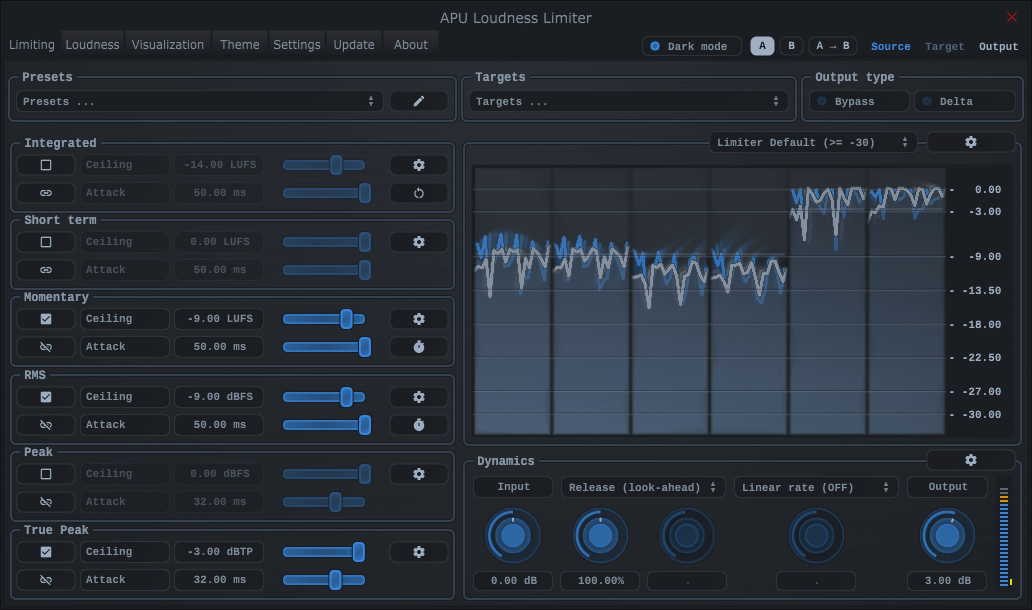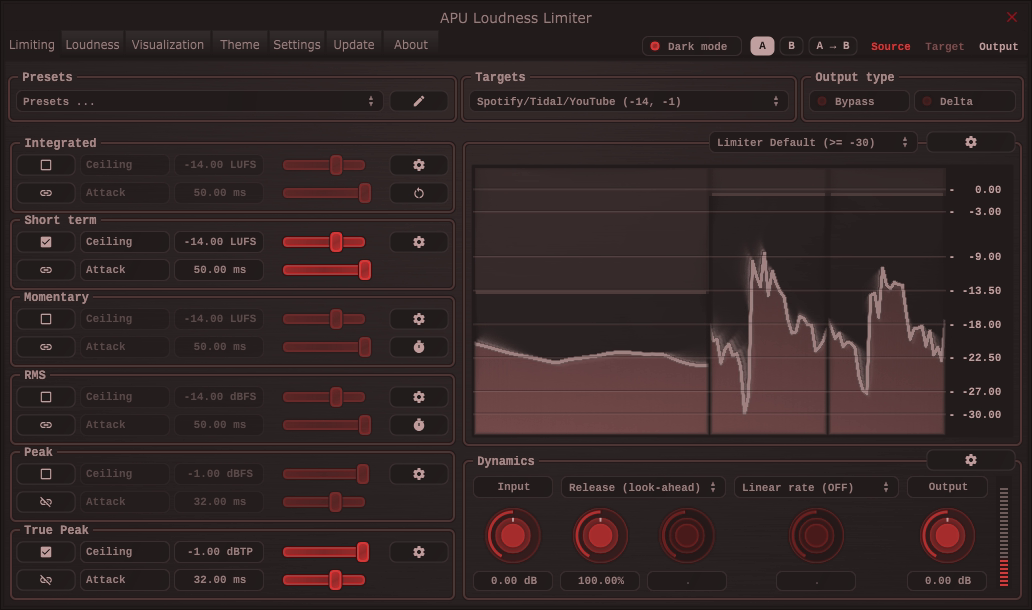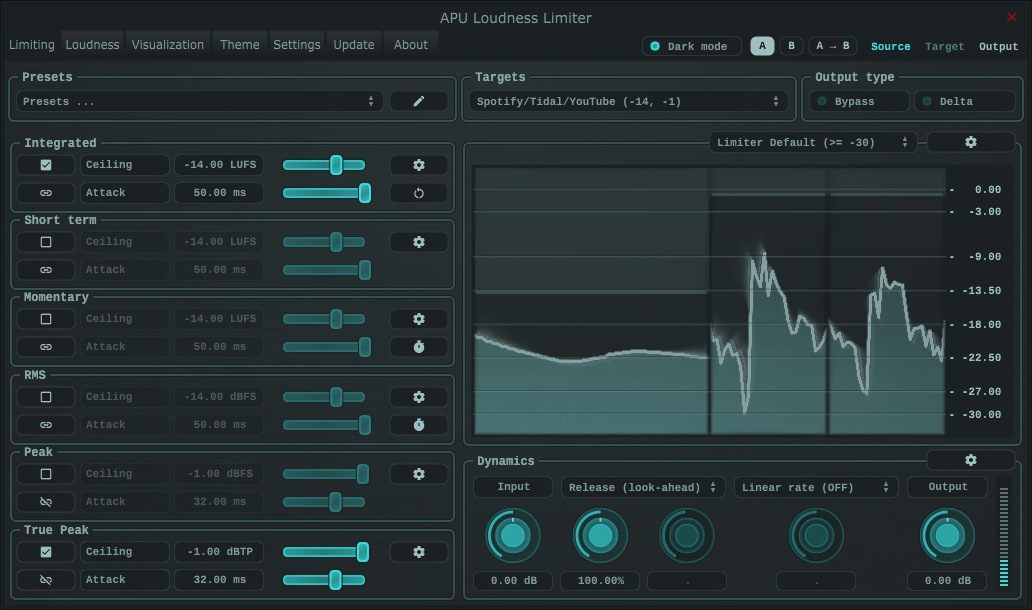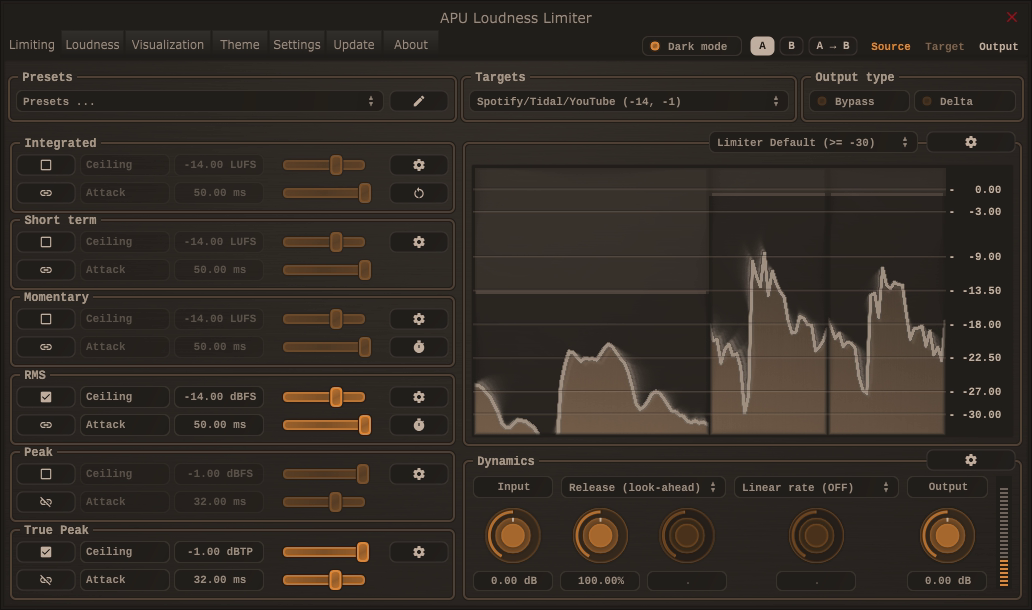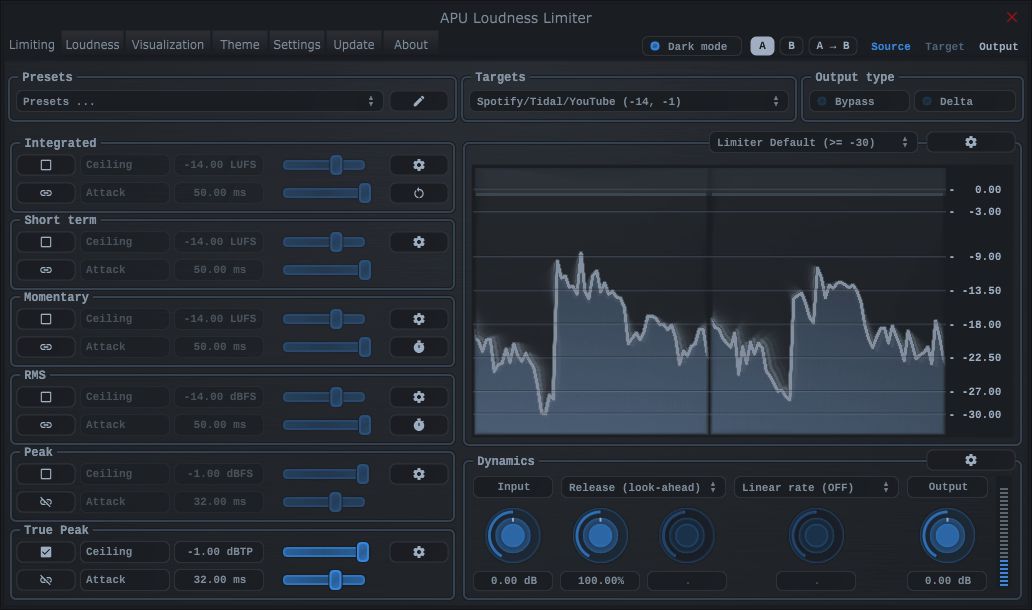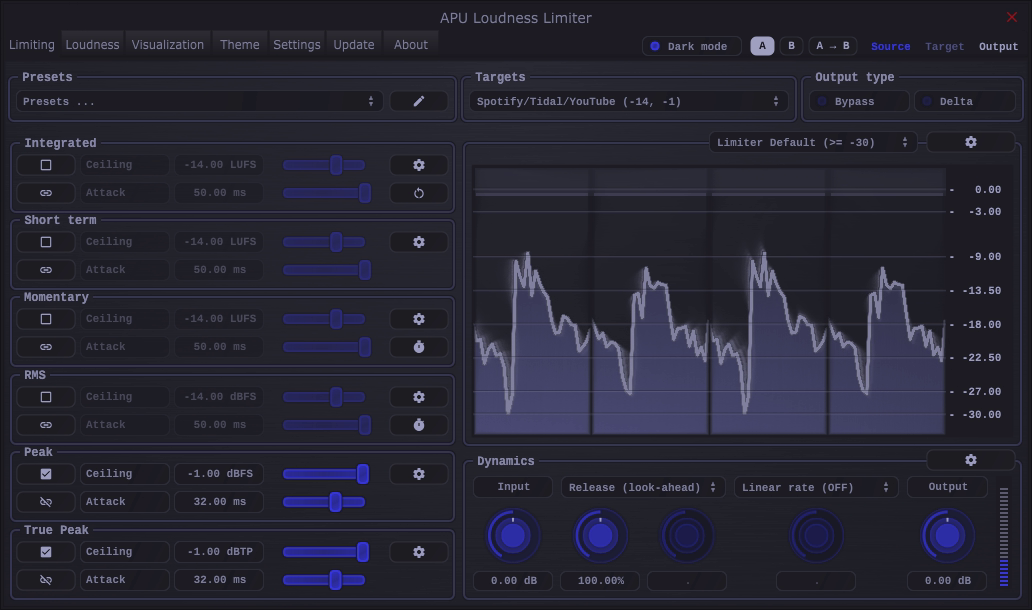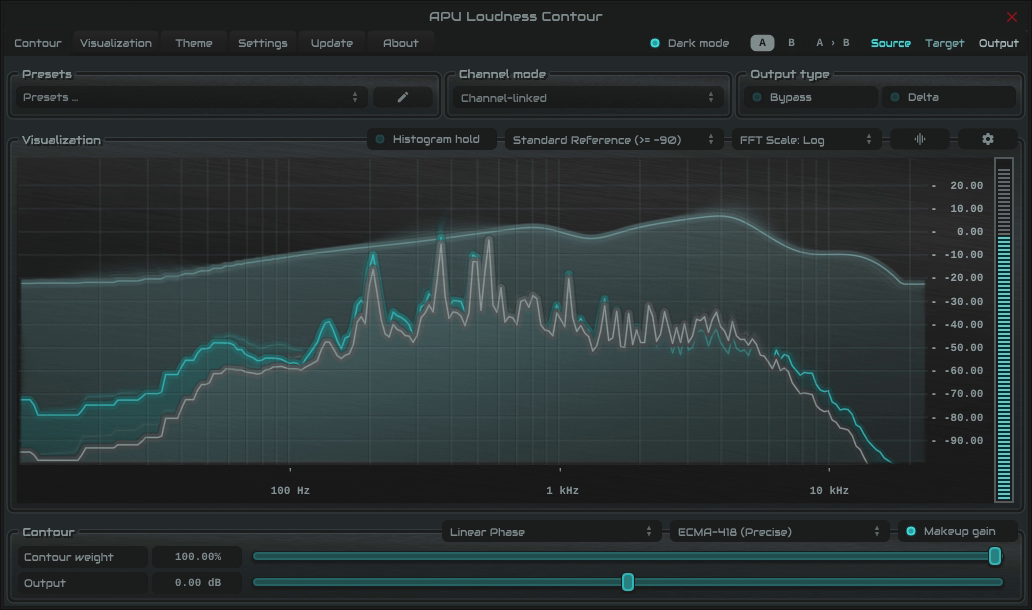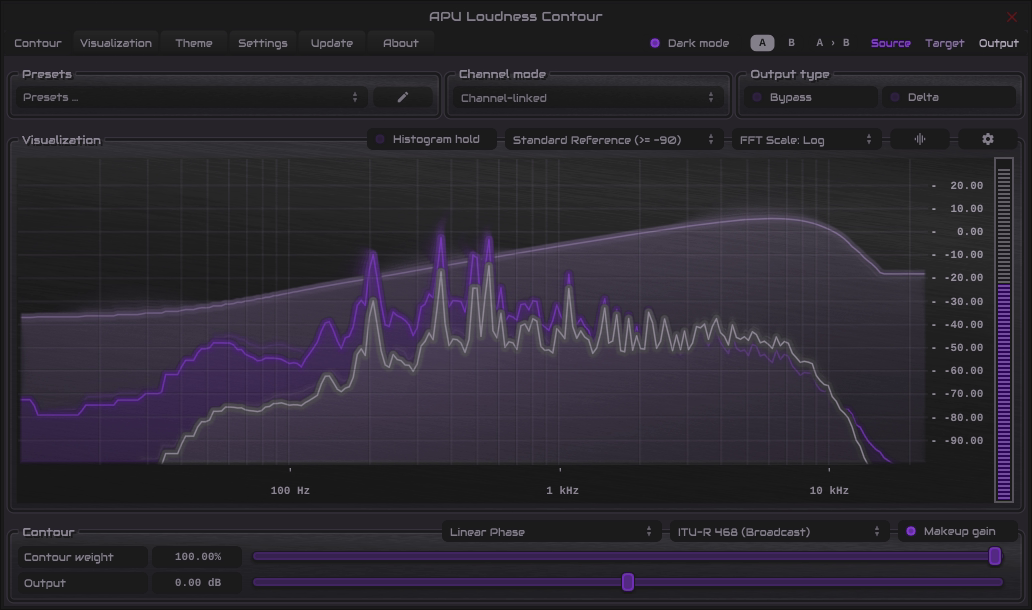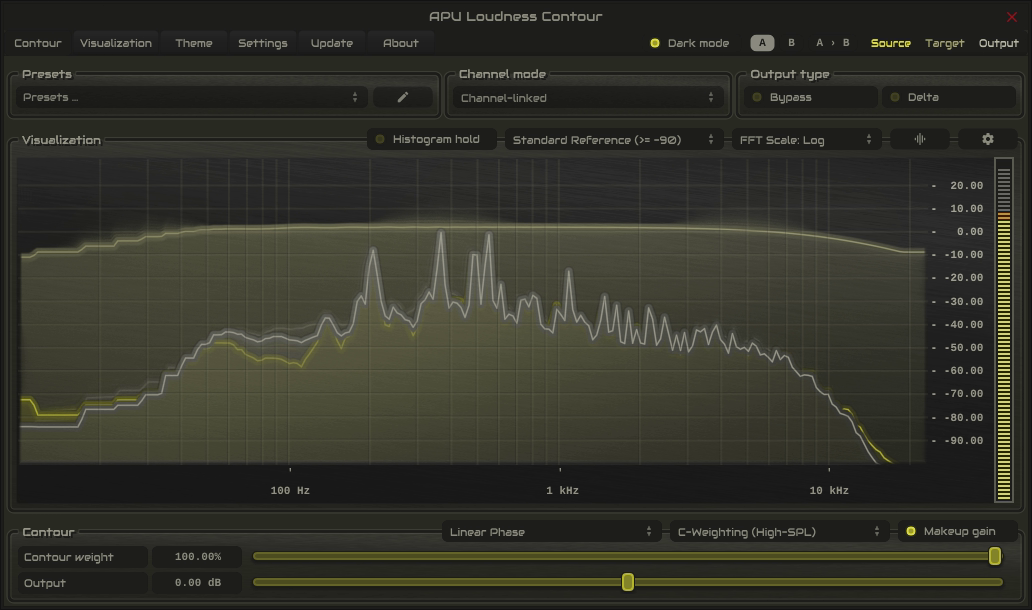The APU Loudness Limiter is a tool designed for loudness-based limiting. Its core function is to perform limiting across multiple loudness measurement types simultaneously, including modern LUFS standards (Integrated, Short-term, Momentary) and traditional metrics (RMS, Peak, and True Peak). The True Peak detection is designed to account for inter-sample peaks.
The limiter provides a range of controls to shape its response. In addition to standard Threshold, Ceiling, Attack, and Release parameters, it includes a look-ahead feature for preemptive gain reduction. A unique “Linear Release” mode offers a constant rate of gain change, differing from traditional ballistic envelopes, which can be used to achieve very fast responses or to set a maximum release speed. You can also select between “Natural” and more responsive “Inertial” ballistics types, with optional dithering.
A central feature is the real-time visualization system, which displays the loudness of the source, target, and output signals over time. You can switch between a rolling history view and a histogram that shows the distribution of loudness levels. This display is highly configurable, with options to adjust layouts, colors, and even add aesthetic shader effects. Diagnostic tools are also built into the visualizer, such as the “Breath residual” feature which helps identify where the limiter is working hardest to meet the target gain, and a snapshot system for comparing loudness histograms.
For workflow, the limiter includes presets that target the loudness and peak requirements of various streaming services and broadcast standards, such as Spotify, Apple, and EBU R128. It also supports external sidechain input for dynamics processing, and uses a “budget” system for look-ahead and attack times, which allows you to adjust these latency-inducing parameters in real-time without causing audio artifacts.
Note: Existing customers can request a discount code using the support beacon on the bottom-right.
System requirements: macOS 10.14 (x64, ARM), Windows 10 (x86, x64), OpenGL 3.2.
Supported software formats: Standalone application, VST, AU, AAX (Pro Tools 11+).
